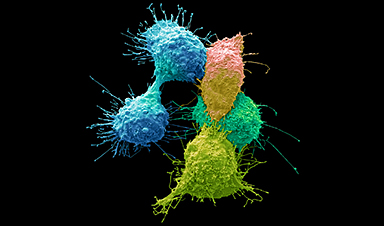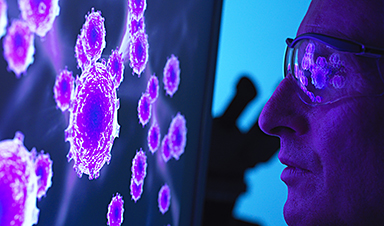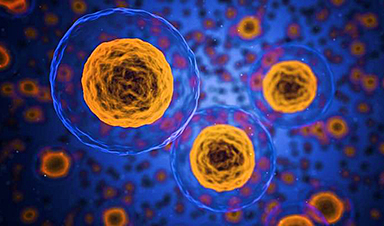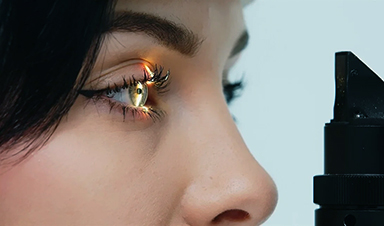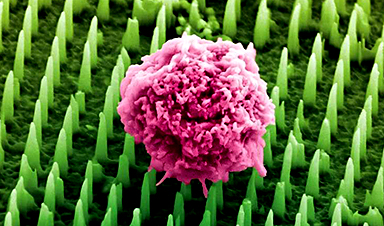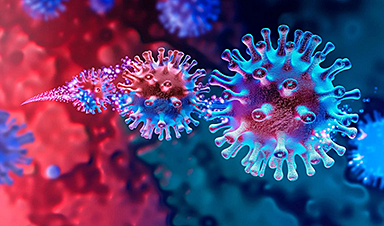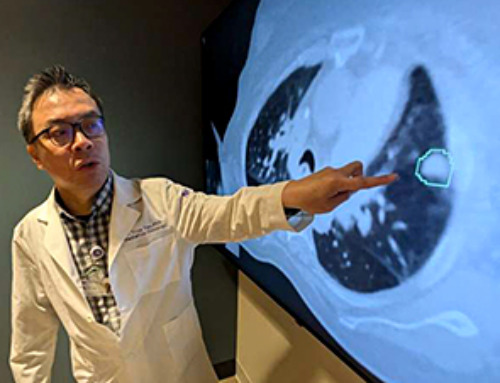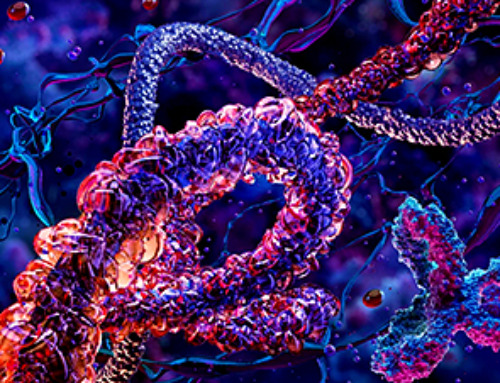Researchers have integrated AI approaches from satellite mapping and community ecology to develop a tool to interpret data obtained from tumor tissue imaging, with the aim of implementing a more individualized approach to cancer care.
In recent years, huge advances have been made in tumor tissue imaging techniques. These developments have led to an incredibly rich amount of raw data. For instance, dozens of biological markers associated with the function and health of individual cells within tumor tissue can be quantified. This data contains information regarding the specific characteristics of different tumors, such as how they would respond to certain treatments. This could then be used to inform more effective and personalized treatment plans for individual cancer patients. However, strategies to effectively analyze and interpret this wealth of information have lagged behind these strides in imaging.
A collaboration between Karolinska Institutet and SciLifeLab (both Stockholm, Sweden) has led to the development of an AI tool capable of analyzing this information and converting it into useful outputs. This tool is referred to as niche-phenotype mapping (NIPMAP). Researchers integrated two unrelated approaches into NIPMAP. First, AI methods used to identify geographical features, such as conurbations and lakes, were used to map features on images of tumor tissues. Second, approaches used to identify how multiple species inhabit the same area, in a field called community ecology, were used to analyze the roles of individual cells and the relationships between them. This allowed for an intricate understanding of the position and role of individual cells within tumor tissues.
“We realized that the interpretation of tumor images is similar to the interpretation of satellite images and that the relationships between cells in a tissue are similar to the relationships between species in ecology,” elaborates Jean Hausser of the Karolinska Institutet, leader of this research.
The hope is that NIPMAP will be able to interpret the masses of data obtained from modern tumor tissue imaging techniques to identify key information such as which treatment options would be most effective.
Already, researchers have partnered with a cancer hospital in Lyon, France to attempt to use NIPMAP to reveal why only certain cancer patients respond to immunotherapy. A further collaboration with the Mayo Clinic in the USA aims to identify why certain breast cancer patients do not require chemotherapy. NIPMAP and other AI analysis techniques have the potential to drive a far greater degree of personalized and patient-tailored cancer treatment strategies through in-depth analysis of tumor features.
News
Johns Hopkins Researchers Uncover a New Way To Kill Cancer Cells
A new study reveals that blocking ribosomal RNA production rewires cancer cell behavior and could help treat genetically unstable tumors. Researchers at the Johns Hopkins Kimmel Cancer Center and the Department of Radiation Oncology and Molecular [...]
AI matches doctors in mapping lung tumors for radiation therapy
In radiation therapy, precision can save lives. Oncologists must carefully map the size and location of a tumor before delivering high-dose radiation to destroy cancer cells while sparing healthy tissue. But this process, called [...]
Scientists Finally “See” Key Protein That Controls Inflammation
Researchers used advanced microscopy to uncover important protein structures. For the first time, two important protein structures in the human body are being visualized, thanks in part to cutting-edge technology at the University of [...]
AI tool detects 9 types of dementia from a single brain scan
Mayo Clinic researchers have developed a new artificial intelligence (AI) tool that helps clinicians identify brain activity patterns linked to nine types of dementia, including Alzheimer's disease, using a single, widely available scan—a transformative [...]
Is plastic packaging putting more than just food on your plate?
New research reveals that common food packaging and utensils can shed microscopic plastics into our food, prompting urgent calls for stricter testing and updated regulations to protect public health. Beyond microplastics: The analysis intentionally [...]
Aging Spreads Through the Bloodstream
Summary: New research reveals that aging isn’t just a local cellular process—it can spread throughout the body via the bloodstream. A redox-sensitive protein called ReHMGB1, secreted by senescent cells, was found to trigger aging features [...]
AI and nanomedicine find rare biomarkers for prostrate cancer and atherosclerosis
Imagine a stadium packed with 75,000 fans, all wearing green and white jerseys—except one person in a solid green shirt. Finding that person would be tough. That's how hard it is for scientists to [...]
Are Pesticides Breeding the Next Pandemic? Experts Warn of Fungal Superbugs
Fungicides used in agriculture have been linked to an increase in resistance to antifungal drugs in both humans and animals. Fungal infections are on the rise, and two UC Davis infectious disease experts, Dr. George Thompson [...]
Scientists Crack the 500-Million-Year-Old Code That Controls Your Immune System
A collaborative team from Penn Medicine and Penn Engineering has uncovered the mathematical principles behind a 500-million-year-old protein network that determines whether foreign materials are recognized as friend or foe. How does your body [...]
Team discovers how tiny parts of cells stay organized, new insights for blocking cancer growth
A team of international researchers led by scientists at City of Hope provides the most thorough account yet of an elusive target for cancer treatment. Published in Science Advances, the study suggests a complex signaling [...]
Nanomaterials in Ophthalmology: A Review
Eye diseases are becoming more common. In 2020, over 250 million people had mild vision problems, and 295 million experienced moderate to severe ocular conditions. In response, researchers are turning to nanotechnology and nanomaterials—tools that are transforming [...]
Natural Plant Extract Removes up to 90% of Microplastics From Water
Researchers found that natural polymers derived from okra and fenugreek are highly effective at removing microplastics from water. The same sticky substances that make okra slimy and give fenugreek its gel-like texture could help [...]
Instant coffee may damage your eyes, genetic study finds
A new genetic study shows that just one extra cup of instant coffee a day could significantly increase your risk of developing dry AMD, shedding fresh light on how our daily beverage choices may [...]
Nanoneedle patch offers painless alternative to traditional cancer biopsies
A patch containing tens of millions of microscopic nanoneedles could soon replace traditional biopsies, scientists have found. The patch offers a painless and less invasive alternative for millions of patients worldwide who undergo biopsies [...]
Small antibodies provide broad protection against SARS coronaviruses
Scientists have discovered a unique class of small antibodies that are strongly protective against a wide range of SARS coronaviruses, including SARS-CoV-1 and numerous early and recent SARS-CoV-2 variants. The unique antibodies target an [...]
Controlling This One Molecule Could Halt Alzheimer’s in Its Tracks
New research identifies the immune molecule STING as a driver of brain damage in Alzheimer’s. A new approach to Alzheimer’s disease has led to an exciting discovery that could help stop the devastating cognitive decline [...]
